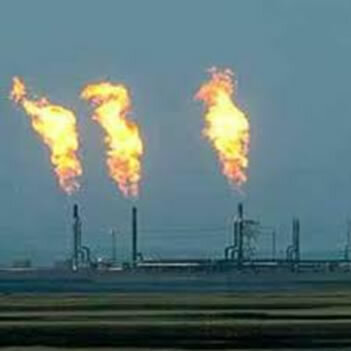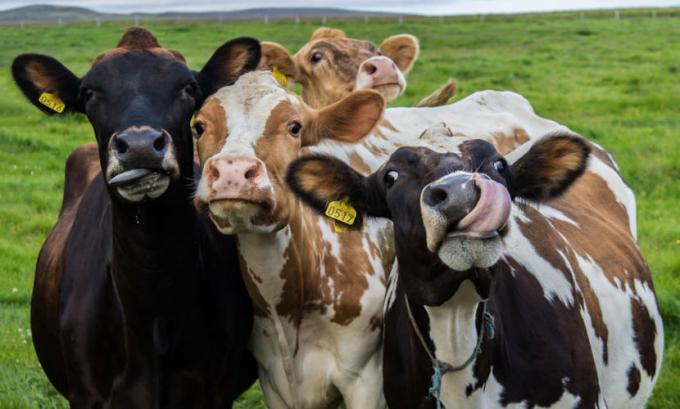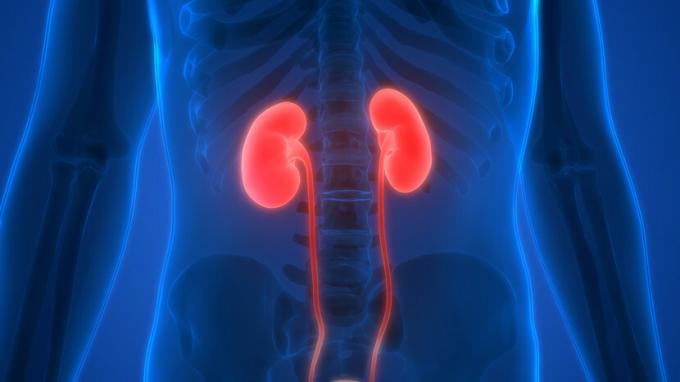O Winter it happens at different times in the two hemispheres of the planet, North and South. This station is well known for having low temperatures, frosts and blizzards, significantly altering the regional landscape. It also gives us the opportunity to enjoy beautiful landscapes and practice snow sports, such as skiing, in addition to being associated, in the Northern Hemisphere, with year-end festivities, such as Christmas.
Read more: Spring - season in which the temperature and flowering of various plants increase
What is winter?
The seasons of the year happen due to the translation movement exercised by the planet in the Solar system. This movement is carried out around the Sun, taking, on average, 365 days and six hours. This difference of six hours is compensated with the addition of one day in the month of February, every four years, when we have a leap year.
The Earth's inclination of 23º27’, associated with the translation movement, generates the seasons, at climatic differences and the incidence of sun rays on the globe.
Winter is the coldest season of the year. During the three months of its occurrence, the nights are longer and the days shorter due to the angle of inclination of the planet, decreasing the incidence of solar rays during this period.

Also, it is The presence of frost and snow is quite common. When the temperature of the clouds is below 0 ºC, the water vapor condenses, giving rise to ice crystals, which fall in the form of snow. this is quite common in polar and temperate areas, not happening in tropical regions.
Another peculiarity of winter is the hibernation of some animals, like the bears. Due to the intense cold, these animals accumulate large amounts of protein and fat over the other three seasons, so that in winter they can withstand the cold by sleeping.
winter features
The tilt of the Earth's axis causes climatic differences between the two hemispheres. This fact brings us the inversion of the seasons in them: when is it summer in the Northern Hemisphere, it is winter in the Southern Hemisphere, and vice versa.
This season is marked by the decrease/absence of rains. As a result, the air humidity is low, which can intensify respiratory health problems, especially in large cities with high levels of pollution. Asthma, bronchitis and pneumonia are some examples.
In large cities, winter also brings a natural phenomenon, but one that is aggravated by the high levels of pollution, the thermal inversion.
in the Northern Hemisphere
Winter in the Northern Hemisphere occurs between December 22nd and March 20th, period when it is summer in the Southern Hemisphere. In the first, the presence of emerged lands is greater than in the second, being also known as the Hemisphere of Lands. This fact entails greater presence of cold characteristics in your winter, with mild temperatures and, in many locations, negative.
All life is changed in winter: food, clothing, leisure programs, nightlife, among other aspects of daily life.

It is in this hemisphere that the second lowest temperature in history was recorded: -71.2 °C in Omyakon, Russia.
In regions of medium and high latitudes (between 30 ºC and 90 ºC), winter is well defined, with sudden drops in temperature, especially at night.
in the southern hemisphere
Winter in the Southern Hemisphere occurs between June 21st and September 23rd, period when it is summer in the Northern Hemisphere. In the Southern Hemisphere, during the aforementioned period, the countries of medium and high latitudes have characteristics at temperatures very similar to those of countries in the Northern Hemisphere, with the difference in the period when occur.
It was in the Southern Hemisphere that there was the lowest temperature ever recorded in history: -89.2 °C, on July 21, 1983, at Estacion Vostok, Antarctica.
winter in Brazil
Brazil has much of its emerging lands located in the tropical zone of the planet, between the Equator and the Tropic of Capricorn. Thus, the main characteristics of the Brazilian winter are not the same as those of neighboring countries such as Uruguay and Argentina.
In Brazil, winter is marked by a great absence of rain in almost all of the national territory, mainly in the regions Midwest and Southeast. Influenced by the polar air mass, a phenomenon known as cold is common in winter here.
This phenomenon happens in early winter and can last for a week. THE cold, originating from the movement of the polar mass, passes through the south of the country, crossing a corridor that goes from Paraná to the south of Rondônia, causing the temperature to drop significantly.
THE Brazilian region that most feels the impact of the winter cold is the region sul. It is almost entirely below the Tropic of Capricorn, with the exception of its northernmost point, Paraná. There is also a small portion of southern Mato Grosso do Sul below this tropic. These locations have low temperatures, in many cases negative, being a full plate for those who like to know the true meaning of cold.
One of the southern cities that attract a lot of tourists during the winter is Lawn, in Rio Grande do Sul. Its fame is international because, in mid-August, the Gramado Film Festival takes place every year, which rewards the great cinematographic productions of Latin cinema.
Winter Solstice
The solstices occur at certain times of the year when one hemisphere receives more sunlight than the other, due to the tilt of the Earth's axis. This fact generates a longer period of the day than the other. In the case of the winter solstice, the night is longer than the day.
In the Northern Hemisphere, the solstice occurs on December 21st, when the night becomes longer. In the Southern Hemisphere, on June 21, there is a difference between the duration of night and day, with the first being longer than the second.
See too: What are solstices and equinoxes?
Importance of winter
Cold can be cruel to living things—plants, animals, humans—but it is also fundamental to their development. When winter comes, many trees lose their leaves to keep only what is essential for their survival. Branches, trunk and roots are kept with resources so that, within a few months, the seeds can germinate and continue to bear fruit and flowers.
Furthermore, some foods only grow in cold climates, such as wheat, barley, oats, grapes. Like the heat, the cold must come in the right measure, which makes the farmers of these foods to be intimate with the weather forecast and the meteorology.
During the winter, several plants “fall asleep”, with the fall of the leaves and fruits. However, this sleep is essential for the generation of new leaves and fruits, because, if there is no natural rest, the plant does not reach its maximum development.

Another importance of winter is getting people together to keep warm. In many countries, pubs and other types of bars adopt a special program for that time, in order to attract consumers: heated environments and hot dishes are among the alternatives for bars.
solved exercises
Question 1 - (PUC GO/2016)
the lamp lighter
Here comes the street lamp lighter!
This same one that comes indefatigably,
Parodying the sun and associating with the moon
When the shadow of the night blackens the sunset!
One, two, three lamps, lights up and goes on
Others lighting up imperturbably,
As the night gradually gets stronger
And the paleness of the moon is just present.
Sad atrocious irony that the human sense irritates: —
He who gilds the night and illuminates the city,
Perhaps there is no light in the hut he lives in.
So many people also insinuates in others
Beliefs, religions, love, happiness,
Like this street lamp lighter!
(LIMA, Jorge de. best poems. 3. ed. São Paulo: Global, 2006. P. 25.)
The text reports a situation that often occurs in the contemporary world, which is the exploration of the hand of hardworking work, and makes reference to the Sun and the Moon, which brings us to the theme of the movements of the Earth. Regarding the characteristics and effects of the two most important movements on our planet, rotation and translation, the following statements are made. Analyze them:
I. Their effect is the succession of days and nights, which influence the organization of life, and the solstice, in which the days and nights are equal and which determines the beginning of spring and autumn.
II. Their effect is the succession of days and nights, which influence the organization of life, and the solstice, in which the days and nights are unequal, and which determines the beginning of summer and winter.
III. Both movements are counterclockwise, and equinox means that the days and nights are of equal length and determine the beginning of summer and winter.
IV. Both movements occur from west to east, and equinox means that the days and nights are of equal length and determine the beginning of autumn and spring.
According to the items analyzed, mark the alternative that contains only correct propositions:
a) I and II
b) I and IV
c) II and III
d) II and IV
Resolution
Alternative D. The solstices mark the difference in the length of days and nights, in addition to marking the beginning of winter and summer in the respective hemispheres.
Question 2 - (UTFPR PR/2016) "The Earth's translation or orbit around the Sun is the cause of the existence of the seasons on our planet."
This statement is:
a) incomplete, as the inclination of the terrestrial axis explains the inequality of insolation.
b) correct, because as the Earth completes its orbit, the position of the Sun changes.
c) incorrect, as the Earth's rotational motion influences the Sun's height in the sky.
d) incomplete, since the precession of the equinoxes will determine whether it is summer or winter.
Resolution
Alternative A. The opening sentence of the exercise is correct but incomplete. As the translation occurs and with the inclination of the planet's axis, there is an inequality of insolation in some locations, generating seasons of the year, solstices and different climatic phenomena, such as the blizzards.



